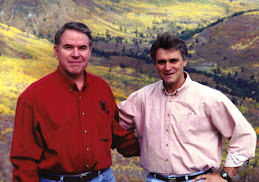Achieving a High Performance Workforce in “Times of Radical Change”
A colleague recently pointed me to a December 2007 article in HR Magazine that purported to make a business case for “creating a High Performance Workforce.” Since performance support is all about optimum (or high) performance the topic captured my full attention.
My problem with the article and others like it is they are to often shortsighted in their definitions as well as their proposed solutions. For example, it most certainly isn’t enough to create a “High Performance Workforce” The real challenge lies in maintaining one--especially in today’s market reality of constant turmoil. Now, you might say that if you create a high performance workforce, the nature of these high performers will inherently ensure proper maintenance and adaptation of knowledge and skills. Not so. If you look under the hood of most discussions around “high performance” you will find the faulty prevailing view that:
“A high performance workforce is comprised of engaged employees that have the necessary skills and motivation to contribute to the growth of the business.” (see the December 2007 HR article.)
The word “have” shows the problem. It suggests that there is a point of arrival. Today, there is no such place – competency is a continual journey. With all that performers need to know and do today, tomorrow, and next week, who can master it all and remain competent? Actually, why should organizations even attempt this?
In 1932 Eric Hoffer described a reality of our global age:
"In times of radical change, the learners inherit the earth while the learned find themselves perfectly equipped for a world that no longer exists..."
Clearly Hoffer understood that learning isn’t about achieving anything, it’s about growing and adapting through continuous learning. Simply gaining mastery of “the necessary skills” may have been sufficient in a stable slow moving economy, but this view ignores realities today. Clayton Christensen’s book The Innovator’s Dilemma describes a deadly path organizations often take. They become lulled into a state of unfounded security because of remarkable “ongoing growth.” They ultimately awaken one day to the reality that the market in which they have been constantly successful has changed and they’re unprepared and unable to adapt to remain competitive. The result is catastrophic failure. Today it is simply unrealistic to assume that employees will ever “have” all the necessary skills and attendant knowledge called for at any given moment. The market place is too dynamic to allow it.
A high performing workforce must have the disposition to be ever learning and ever changing. And a high performing organization must have in place the capacity to support that disposition and business need.
Performance Support is fundamental to this capacity. Performance Support is everything an organization does to provide intuitive, tailored aid to its workforce at their moments of need to ensure the most effective performance (collectively and individually.) These moments of need include when they are:
- Learning something for the first time
- Expanding their understanding and/or capacity to perform
- Applying or attempting to remember what they have learned
- Faced with something that has gone wrong, and
- Required to learn a new way of doing something because of change.
This fifth need—to learn a new way of doing something because of change has been the least understood and most ignored need in the area of performance support. Organizations will never achieve an agile workforce without addressing this need head on.
Years ago I was doing some work in
There is a principle of automaticity associated with performance. Certain things that we do over and over again become so ingrained within our skill set that they become automated—we do it with little to no conscious thought. When organizations invest in embedding skills into the workforce, and then solidify those skills via on-the-job application over time, those skills become deeply embedded. In such cases, changing to a new way of performing can be beyond tough. Little wonder why the track record of enterprise wide efforts to change behavior has a 75% failure rate (see: Peter Cheese, “Disturbing the System.” Accenture: Outlook Journal, June 2004, p. 34. See also: Mark J. Dawson and Mark L. Jones, “Herding Cats: Human Change Management,” PriceWaterhouseCoopers Publication http://www.pwc.com/extweb/pwcpublications.nsf/docid/2ff7d96b5313a034852570b50042102a.).
I recently upgraded my operating system to




No comments:
Post a Comment